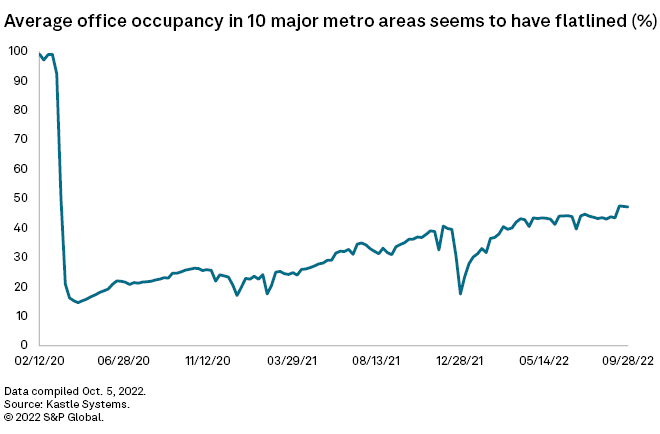

"The era of commuting to office work is over. It is now significantly easier, cost-effective, and faster to achieve what the nineteenth century could not: relocating information and office work to where the people are," declared Peter F. Drucker, widely recognized as the Father of Management.
A global shift is underway as knowledge workers move away from bustling metropolises, favoring smaller towns for greater flexibility with remote and hybrid work options. This shift is resulting in a diminishing demand for commercial real estate, evident in statistics such as the PFNYC survey, indicating that only 8% of pre-pandemic office employees in New York City have returned to a five-day workweek. The trend extends beyond New York City, posing a potential threat of a commercial real estate market downturn across major U.S. cities, as highlighted by the San Francisco Standard.

According to SP Global's report on a Kastle Systems study, major U.S. cities are experiencing an average office occupancy rate of around 47% at the end of September, marking a stark decline from pre-pandemic levels. A parallel scenario is unfolding in the UK, where a study by Boodle Hatfield reveals a substantial underutilization of office space, particularly in London's financial district.
In essence, the landscape of commercial real estate is being significantly reshaped by the prevalence of remote work.
Adapting to Change or Facing Crisis: A Critical Crossroads for Major Cities
New York City Mayor Eric Adams acknowledges the need for a paradigm shift, urging economic leaders to reassess business centers and districts. Meanwhile, a study by New York University Professor Arpit Gupta predicts substantial declines in occupancies, lease revenues, and renewal rates in commercial real estate, potentially leading to a 39% long-term decline in value. This underscores the urgency for cities and economies to embrace creative business plans to navigate the evolving world of technology and knowledge management.
Understanding the historical drivers behind office spaces is crucial in facilitating a successful transformation. The office, initially conceived as a haven for concentration and secure storage of documents, evolved alongside technological advancements. However, the pandemic has unveiled a truth – people can be equally, if not more, productive working remotely. A Chicago Booth survey reveals that 6 out of 10 workers admitted to being more productive while working from home.
Revolutionizing Office Spaces and Urban Dynamics for the Future
Research indicates that urbanization contributes to income inequality, and the adoption of flexible work methods is benefiting areas outside major metropolitan centers. The migration of people from Santiago, Chile, to smaller towns exemplifies this trend. The idea of flexible work has allowed for the dispersal of human capital, reducing concentration in urban areas over the last century.
Imagine a future where major cities are redesigned to attract residents with remote or hybrid jobs based on factors such as excellent schools, healthcare facilities, entertainment, waterfront, and community, rather than proximity to corporate offices. This vision could involve renting flexible workspaces in large office buildings on a short or long-term basis, making urban spaces more affordable for essential workers and introducing a new dynamic to small towns.
James Bianco, President of Bianco Research, emphasizes the need for a shift in the current working model. While the transition to flexible work methods may pose challenges for commercial real estate, reimagining urban centers could prevent a crisis and align them with the demands of the new normal.
In conclusion, metropolitan cities may continue to attract top-tier workers, but the emphasis must shift from a traditional 9-to-5 office mindset to creating vibrant places to work, live, and play.





Easy to start,
intuitive to use





